
The Pentatomoidea are a superfamily of insects in the Heteroptera suborder of the Hemiptera order. As Hemiptera, they share a common arrangement of sucking mouthparts. The roughly 7000 species under Pentatomoidea are divided into 21 families. Among these are the shield bugs, giant shield bugs, burrower bugs, and stink bugs.

Scutelleridae is a family of true bugs. They are commonly known as jewel bugs or metallic shield bugs due to their often brilliant coloration. They are also known as shield-backed bugs due to the enlargement of the thoracic scutellum into a continuous shield over the abdomen and wings. This latter characteristic distinguishes them from most other families within Heteroptera, and may lead to misidentification as a beetle rather than a bug. These insects feed on plant juices from a variety of different species, including some commercial crops. Closely related to stink bugs, they may also produce an offensive odour when disturbed. There are around 450 species worldwide.

Chhetri, historically called Kshettriya or Kshetriya or Khas are Nepali speakers of Khas community, some of whom trace their origin to migration from medieval India. Chhetri was a caste of administrators, governor and military elites in the medieval Khas Kingdom and Gorkha Kingdom. The nobility of the Gorkha Kingdom mainly originated from Chhetri families. They also had a strong presence in civil administration affairs. The bulk of prime ministers of Nepal before the democratization of Nepal belonged to this caste as a result of the old Gorkhali aristocracy. Gorkha-based aristocratic Chhetri families included the Pande dynasty, the Basnyat dynasty, the Thapa dynasty, and the Kunwars.

Shukra Raj Shastri was a Nepalese intellectual and fighter for democracy who was executed by the autocratic Rana dynasty. He is one of the four martyrs of the Nepalese revolution that toppled the Rana regime. The other three are Dashrath Chand, Dharma Bhakta Mathema and Ganga Lal Shrestha.
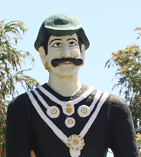
Thapa is the surname commonly used by Nepali people belonging to the Chhetri (Kshatriya) caste of the Khas group and Magar group, a Sino-Tibetan speaking ethnicity.
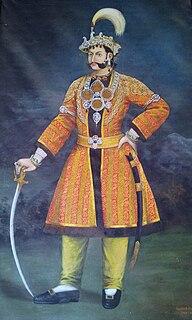
Mathabar Singh Thapalisten (help·info), also spelled Mathbar, Mathawar, Mathavar, variantly called Matabar Singh Thapa, was the Prime Minister of Nepal and the Commander-In-Chief of the Nepalese Army from 1843 December 25 – 1845 May 17, until he was murdered by his nephew Jung Bahadur Rana. He was the first Mukhtiyar to title himself as a Prime Minister, as per the British convention. He was the nephew of Bhimsen Thapa, who was falsely sentenced for imprisonment for the death of King Rajendra's six months old son. Mathabar Singh Thapa fled to Shimla after the execution of Bhimsen Thapa, to avoid his own execution as he was Bhimsen's nephew. Four years later, the second queen of Rajendra, Queen Rajya Lakshmi, called him back and installed him as the Mukhtiyar, paving the way for him to eventually title himself as the Prime Minister.. Mathabar Singh, however, enraged the queen by refusing to make her son, Ranendra Bikram, the king. The queen, in turn, had him shot by his own nephew Janga Bahadur Rana and thereby making him the last dynast of the Thapa dynasty.

Calliphara nobilis is a species of jewel bug found in Asia. Like all species of jewel bugs, it is phytophagous, feeding on the leaves, fruit and seeds of its host plants. This insect is notable for its multiple defense mechanisms: it is highly mobile and swarms disperse with a loud buzz when disturbed; it is aposematically colored, which serves as a warning to any would-be predators that it is unpalatable; and it possesses a robust chemical defense mechanism: it can secrete an irritating and toxic fluid from a pair of metathoracic scent glands when threatened.
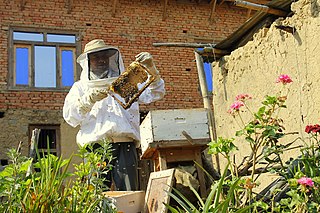
Nepal is known for its ancestral technology of beekeeping: geographical conditions and lack of modern equipment have forced the collectors to risk their lives. Apiculture in Nepal began 20 years ago but is still not very developed. Different species of honey-producing bees are found in Nepal. Only two of them are raised for apiculture: Apis cerana and Apis mellifera. These species have several qualities that are desired by humans and are vital for the pollination of flowers and forests. Bees are also useful for agriculture which is an important activity in Nepal but they have become threatened by deforestation and parasites.

Nain Singh Thapa or Nayan Singh Thapa was a Nepalese Kaji (minister) and a military general. He died in the offensive campaign of Kangra from bullet injury. He was the owner of the Thapathali Durbar temple complex.

Thapa dynasty or Thapa noble family was a Kshatriya Rajput political family that handled Nepali administration affairs between 1806 and 1837 A.D. and 1843 to 1845 A.D. as Mukhtiyar. This was one of the four noble families to be involved in the active politics of the Kingdom of Nepal, along with the Shah dynasty, Basnyat family, and the Pande dynasty before the rise of the Rana dynasty. At the end of 18th century, Thapas had extreme dominance over Nepalese Darbar politics alternatively contesting for central power against the Pande family. Bir Bhadra Thapa was a Thapa of Chhetri group and leading Bharadar during Unification of Nepal. His grandson Bhimsen Thapa became Mukhtiyar of Nepal and established Thapa dynasty to the dominating position of central court politics of Nepal.

The Pande family or Pande dynasty was a political family that directly ruled Nepali administration affairs since the 16th century to 19th century as Mulkaji and Mukhtiyar. This dynasty/family was one of the four noble family to be involved in active politics of Nepal together with Shah dynasty, Basnyat family and Thapa dynasty before rise of Rana dynasty. Pande dynasty is the oldest noble family to hold the title of Kaji. This family was decimated from political power in 1843 CE from the political massacre conducted by Prime Minister Mathabar Singh Thapa as a revenge for his uncle Bhimsen's death in 1839.

Mulkaji was the position of head of executive of Kingdom of Nepal in the late 18th and early 19th centuries. It was equivalent to Prime Minister of Nepal. There were 5 Mulkajis appointed between 1785 and 1804.
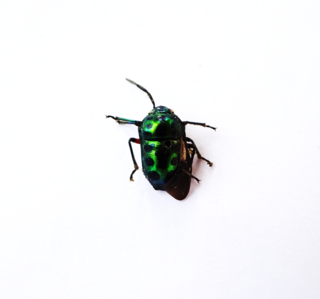
Chrysocoris patricius is a jewel bug in the family Scutelleridae. It is the smallest known species from the genus Chrysocoris.
Krishna Bahadur Kunwar after 1848 CE known as, Krishna Bahadur Kunwar Rana was the Nepalese politician, administrator, military general and minister of state. He served as the acting Prime Minister of Nepal upon the demise of his elder brother Bam Bahadur Kunwar from 25 May 1857 to 28 June 1857. He also served as the Commander-In-Chief of the Nepalese Army between 1857 and 1862.
Second Fateh Jung Shah Ministry or Second Government of Fateh Jung Shah or Fateh Jung Shah's Second Council of Bharadars was the council of the Bharadars which was formed on September 1845 after the assassination of Mukhtiyar Mathabarsingh Thapa. The ministry was led by Fateh Jung Shah in his second term as Mukhtiyar of Nepal. However, the virtual Prime Minister was Kaji Gagan Singh Bhandari who had stronghold over large number of military forces than the Mukhtiyar. This council of ministers were dissolved due to the murder of entire council members on 14th September 1846 by the only surviving member Jang Bahadur Kunwar; the incident known as the Kot Massacre.
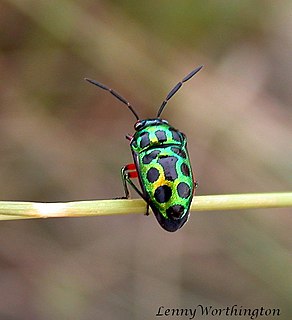
Chrysocoris pulchellus is a jewel bug in the family Scutelleridae.

Dr. Bala Ram Joshi was a Nepalese scientist and professor of physics who made significant contributions to the fields of science and technology of Nepal. His Ph.D. thesis at The University of Glasgow, Studies of orbital electron capture by scintillation counter methods, thesis earned him the Thomson Prize at the University of Glasgow.
Poecilocoris splendidulus is a species of jewel bug in the family Scutelleridae.

Poecilcoris druraei is a species of jewel bug described by Carl Linnaeus in 1771. It is in the family Scutelleridae and is native to Hong Kong, Taiwan, and Thailand.

















